dCS Lina DAC
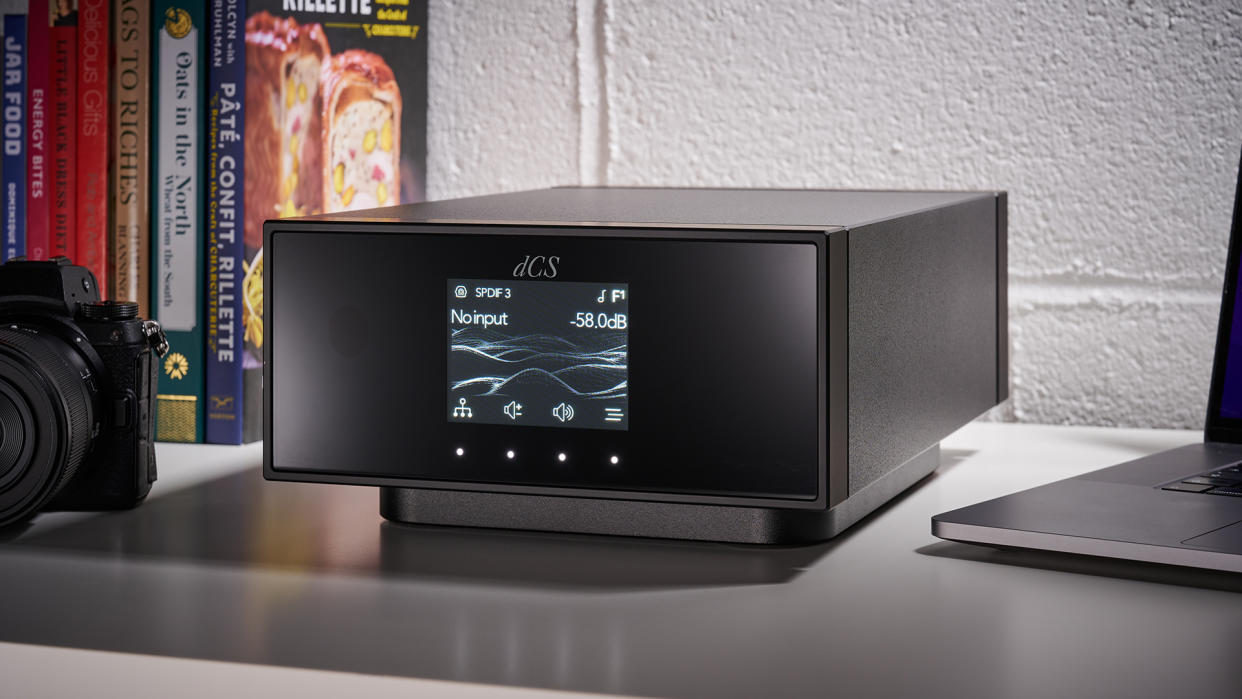
If the words ‘dCS’ and ‘entry-level’ spark the thought of a truly affordable digital product that embodies the qualities that have made the brand so dominant at the top end of the market, you are in for a disappointment. While buying a new Lina Network DAC is indeed the cheapest way into owning something new that incorporates the brand’s trademark Ring DAC digital conversion circuitry, this product certainly doesn’t fall into what most people would consider the ‘accessible’ category.
What your £12,500 / $13,650 / AU$22,000 does buy you, though, is a generous dose of dCS technology and a product that puts all but the very best of its rivals firmly in the shade when it comes to performance. The company calls this product a Network DAC while we would usually describe something with its capabilities as a music streamer.
Build & features
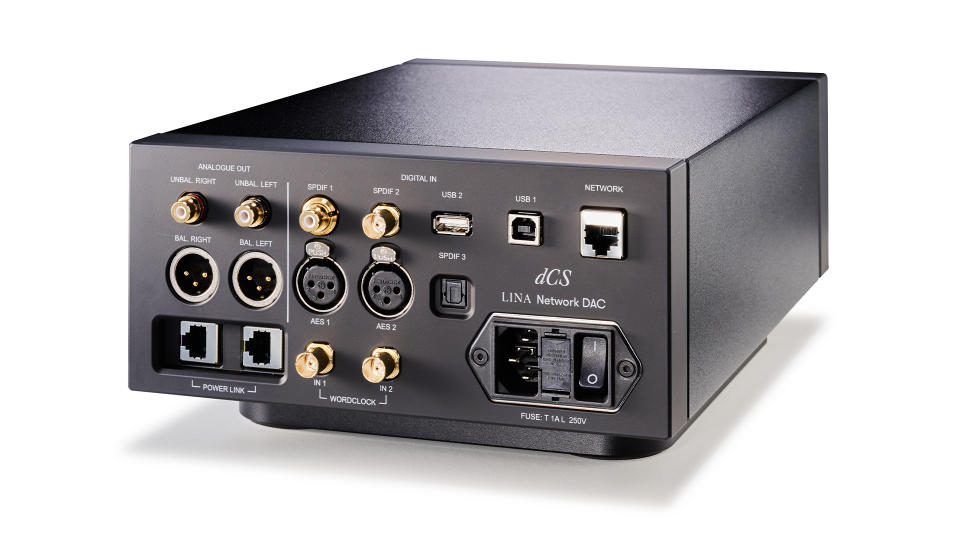
Either way, this is a UPnP streamer that packs most of the usual features and inputs we would expect. Specifically, that means Spotify, Tidal, Deezer and Qobuz are on the menu, as is Apple AirPlay 2. This unit is Roon Ready and has the usual trio of digital inputs options – USB Type B, optical and coax (both RCA and BNC) – alongside a pair of AES/EBUs that are a reminder of the brand’s beginnings in the professional world. There are omissions of note, though, and they are Chromecast, Bluetooth and wi-fi ability. Given everything else it does, only you can decide if any of these are deal breakers for you. While acknowledging the convenience of wi-fi connections, we usually recommend using wired ethernet for the extra stability it provides and while the lack of Bluetooth is a miss, it is more acceptable in a product that puts performance so high on the list of priorities.
dCS Lina DAC tech specs
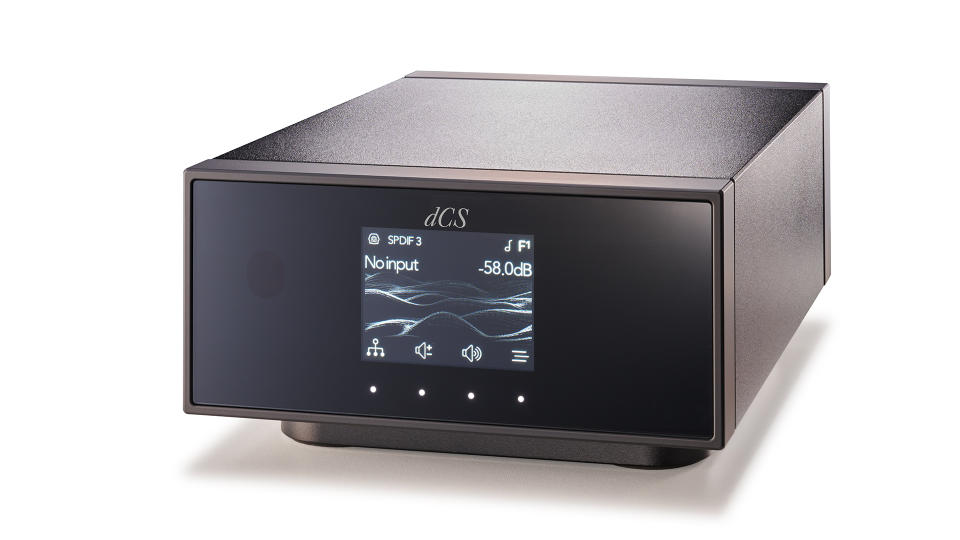
Type Network DAC
Streaming services Spotify, Tidal, Qobuz, Deezer, Internet radio
Max file compatibility 24-bit/384kHz and DSD128
Inputs USB Type A, USB Type B, optical, coax, coax BNC, AES EBU x 2
Volume control? Yes
Output Balanced XLR, single-ended RCA
Headphone output? No
Size (hwd) 32 x 36 x 53cm
Weight 10.3 kg
General standards of build are as high as you would expect for the money. The Lina’s casework feels incredibly solid and, at 10.3 kg, has a pleasant heft to it. Take a look inside and it is hard not to be impressed by the quality of construction and obvious care in the way the circuit is laid-out. The front panel display looks a little basic but shows all the important information and remains readable from a distance. It doesn’t show album art though, which is a bit of a shame but not really a major loss given the art will appear on the phone or tablet running the dCS Mosiac control app.
You can access the unit’s set-up menus from the front panel as well as the aforementioned app. If you are using the main unit controls for the job, note that it isn’t a proper touch screen and that the four dots work as the controls. The app has been developed over the years into something that is pretty comprehensive but now feels a little slow and clunky at times. It is probably time for the company to have another look at this one.
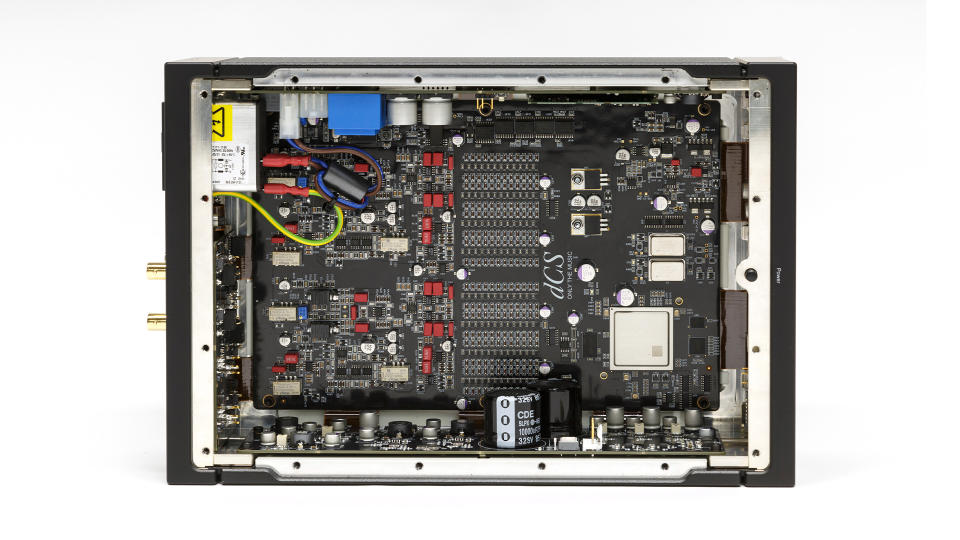
There are a range of set-up adjustments available, from setting the Lina’s output voltage to picking the ideal digital filter for your taste and system. Thankfully, dCS has chosen to pare back the number of filter options from its pricier models and here there are two that work with PCM streams and four for DSD signals. You can also decide whether the Lina switches the signal to DSD or DXD during the conversion process. The differences between all these choices are relatively subtle, but in our set-up the F2 PCM filter setting came out on top. We didn’t have a similarly conclusive view on the DSD filters as our preference shifted according to the music we tried. The choice between DSD and DXD processing was pretty clear for us, with the DSD option coming out on top.
The Lina DAC didn’t have a volume control when it was launched. A subsequent software upgrade added that functionality and means that the Lina can front a wonderfully minimalist system by driving a power amplifier or pair of active speakers directly. The ability to change the maximum output voltage, within the range of 0.2 v to 6v, means that the unit can be optimised for use with a wide range of products.
That volume control software upgrade is an important point to note. dCS has an established record for making software upgrades available for older products, even those out of production. These upgrades can add functionality or even improve performance, and where possible, they tend to be free. We think this is something the company should be commended on.
Sound
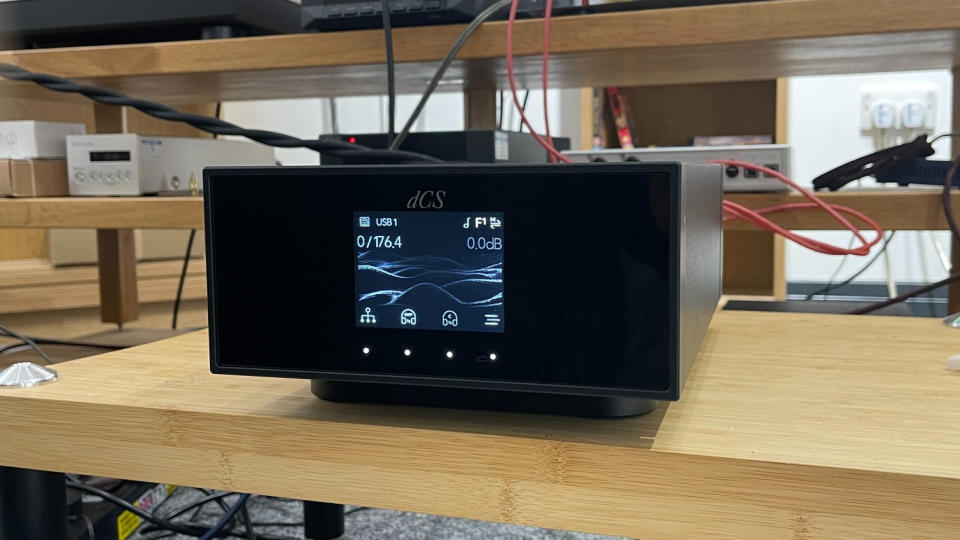
Any product at this level demands a top-class system. We plug the dCS into our reference amplifier, the Burmester 088/911 MkIII pre/power combination, which drives either the ATC SCM 50 speakers or Wilson Benesch’s A.C.T. 3Zero floorstanders. We also use Yamaha’s YH-5000SE headphones to try the Lina DAC’s various headphone crossfeed processing modes.
The Lina DAC holds true to the brand’s honesty-first philosophy. It doesn’t deal in sonic fireworks or ‘wow’ moments unless they are already in the recording. This is an even-handed and transparent performer that stays faithful to the recording for better or worse. Feed it a bright and slightly aggressive effort such as Eminem’s Recovery and that’s exactly what you get. There isn’t an exaggeration of the flaws of the recording, but the Lina DAC makes them pretty clear. Equally, it doesn’t over-egg things, as some can, and still allows us to enjoy the good parts.
The Eminem/Lil Wayne duet No Love thunders along with plenty of verve. Earlier dCS designs, for all their neutrality and insight, could sound a little soulless and sterile, but that’s not the case here. The Lina DAC sounds surefooted with rhythms and conveys the hard-charging momentum of the track well. It captures Eminem’s passion brilliantly and delivers every syllable of his rapid-fire delivery with the clarity we would hope for. More than that, his voice comes through with naturalness and proper expression. There is natural warmth on display, or at least as much as Eminem is willing to show while he shoots missiles in all directions.
Elsewhere there is plenty of punch and a generous dose of power and authority in the lows. This is a coherent performance from the top-end that’s crisp and refined to the deepest bass notes that remain taut and tuneful.
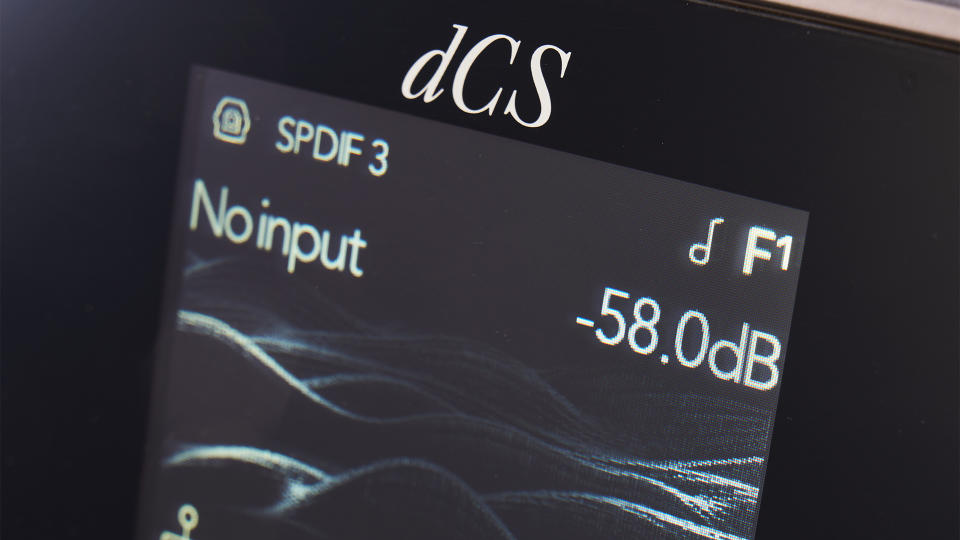
Those qualities are equally apparent when we switch to Beethoven’s 9th Symphony. Here, the dCS conveys the scale and authority of the orchestra brilliantly. It keeps a firm hold of low-level instrumental strands even when the music gets demanding, and its sense of composure never falters. This is an organised and controlled performer that ticks every box when it comes to the mechanics of hi-fi, from having a focused and beautifully layered soundstage that remains stable regardless of the complexity of the music to delivering the sound with an utterly neutral though not sterile tonal balance. Detail levels are excellent as is the convincing, unexaggerated way this unit handles the leading edge of notes.
Large-scale dynamic shifts are rendered with skill while more delicate changes in intensity are reproduced with the finesse they deserve. We could break down the performance by input but there isn’t any need here. While there has never been any question about the quality of dCS’s DAC designs we haven’t always been totally convinced that the streaming module performs to quite the same standards. That isn’t an issue here, as we’re as happy using the Lina as music streamer, across any of its sources, as we are using the digital inputs.
We give the various headphone processing modes a listen and find that the standard Crossfeed setting works well, as does the first Expanse option. Both of these manage to shift our reference Yamaha YH-5000SE’s soundstaging more to that which we hear from speakers, and we notice little in the way of distracting phase effects. Of the two, we end up listening to the dCS Expanse the most. The second Expanse mode doesn’t work so well for us, sounding a little disjointed.
Verdict
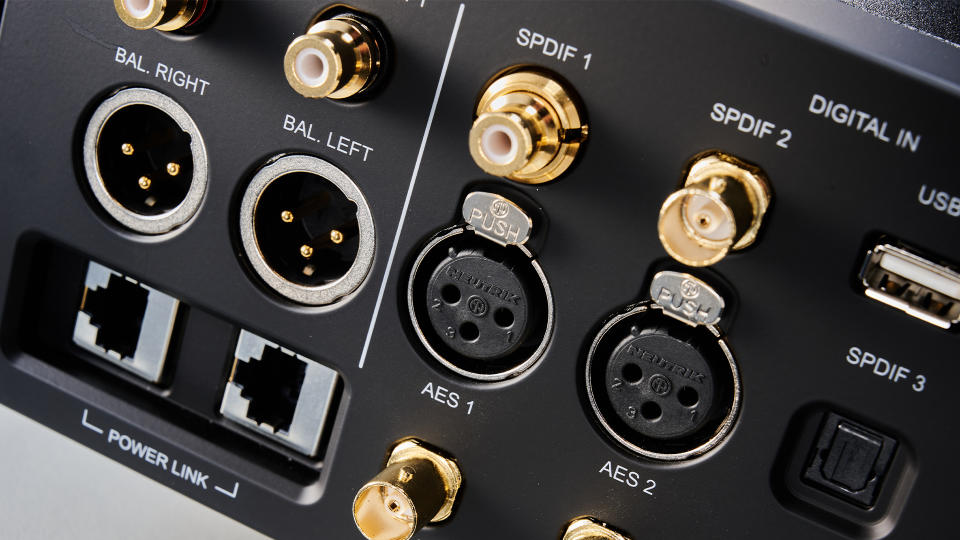
The Lina DAC is a hugely talented unit that performs to an excellent standard. It is a fine entry point into the world of dCS and certainly gives a large dose of the performance of the company’s pricier products. While we have the odd question mark over the omission of certain features, this remains a terrific unit and one that we recommend highly.
SCORES
Sound 5
Build 5
Features 4
MORE:
Read our review of the Moon 680D
Also consider the Chord DAVE
Read our Naim NSC 222 review
Best DACs: USB, desktop and portable digital-to-analogue converters

